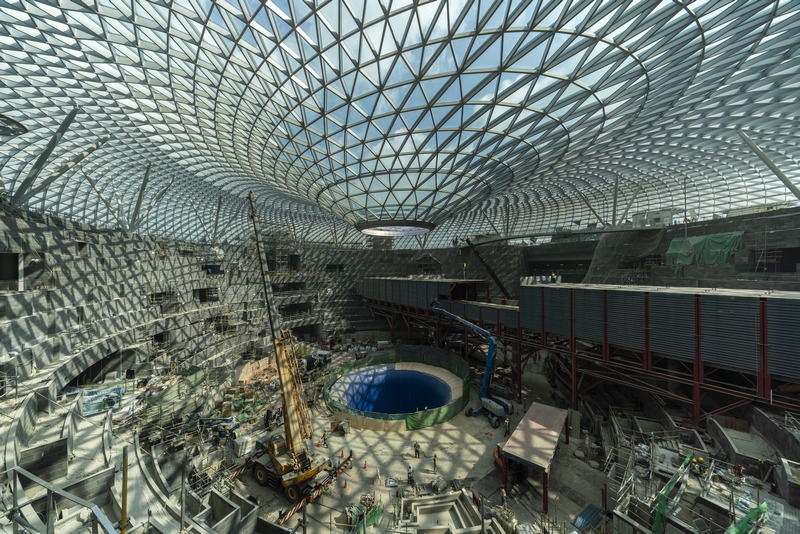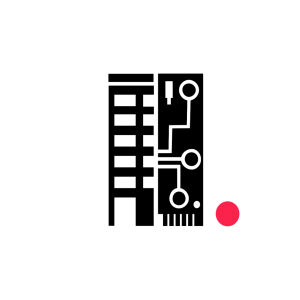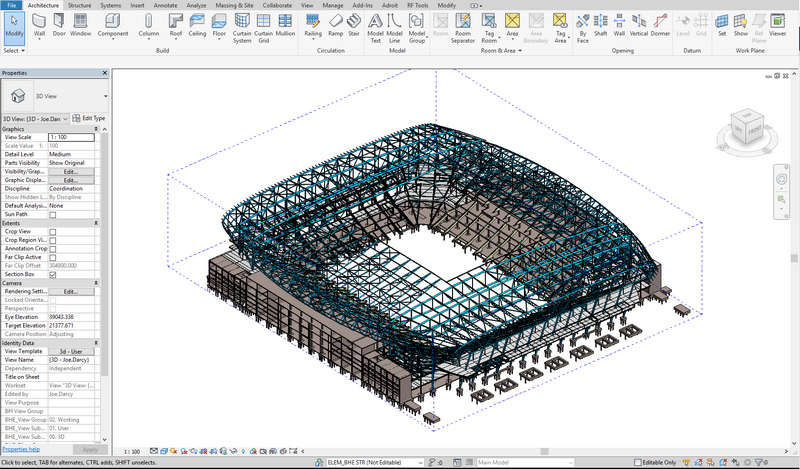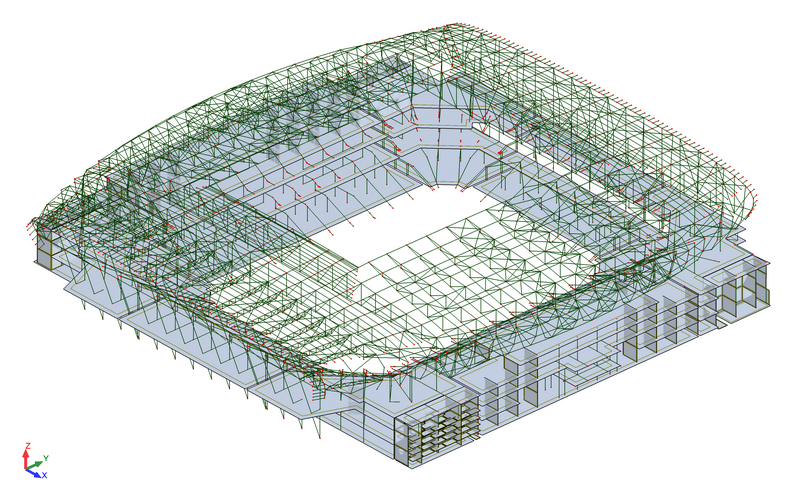The world has changed beyond recognition since the advent of digital technology, not least for the built environment as represented by the AEC (architecture, engineering and construction) industry.
(按此瀏覽中文版)

The 1990s saw the start of the digital era, marked largely by the introduction of computer-aided design, used by industry participants using proprietary software such as AutoCAD. This was succeeded in the early 2000s by business information modeling or BIM, which paved the way for AEC professionals to gain access and insight into tools using an intelligent 3D model-based process that continues to allow more efficient planning, design, construction and management of buildings and infrastructure through the creation and management of digital information or data. Less than a decade later we entered another phase of the digital era – the era of parametrics and open-source computational design and engineering. So what does this mean for the future of design?
“Traditionally, the way our industry has approached everything digital has been through the adoption of software,” explains Emidio Piermarini, Asia Computational Projects Lead for BuroHappold Engineering since 2014.
“When we as engineers learn to code we are taking a step back from our reliance on software to take responsibility for the data. For me, computational engineering (CE) is the use of bespoke digital tools, created by engineers to facilitate the application of engineering first principles and deliver projects. At the end of the day a computational engineer is an engineer who can code. It’s about understanding and creating the data behind what we’re designing,” he adds.
For engineering companies such as BuroHappold, with around 1800 employees globally, CE has become the bedrock of the way they work, with all engineers now being provided with at least a basic training of coding in-house. The effect is what might once have taken days using software now takes seconds. However, it’s not just about saving time, but using that time more effectively for the advancement of the industry as a whole.
Piermarini’s career with BuroHappold started in 2014 when he arrived in Asia after completing his Masters in the US to work on Zaha Hadid’s iconic Morpheus Tower in Macau. Under the guidance of UK-based Rob May, Global Computational Projects Lead he led a team whose role was to examine the freeform design of building and to work out how the steel exoskeleton connections would fit together.
“Whatever you think of the building from an architectural point of view, history is yet to name it as an inflection point of CE. From an engineering perspective however, it marked the first point in taking a step back from a reliance on software to taking responsibility for the data, and at the same time seeing what radically different designs can be achieved when this happens,” he explains.
“We designed 2,500 steel connections for the building’s freeform exoskeleton.
Our use of coding allowed us to translate the architect’s ideas into data that would transform those ideas into reality. This data was not constructed by a human being, but rather from an algorithm created by a human being, which had the effect of unleashing the principles of engineering via computation.”
“We want to challenge the way we
design and work today by using
technology that is open and accessible
for all. We think that by working
together we can solve harder more
impactful problems for the world.”
The BHoM

It is no coincidence that the launch of what has become known as the Buildings and Habitat Object Model (BHoM) in December 2018, an open source library of paradigm of being dependent on software to create a collaborative computational development project, where code can be co-created and shared and downloaded by anyone anywhere in the world. For May, it was the moment that he realised that the value of an efficient piece of code and the intellectual property value of being able to solve problems in a way that would drive the industry forward.
“The BHoM solves a huge problem in our industry to do with interoperability, just by the fact that it’s a common language. The use of software is letting someone else drive the ship in terms of data. If you have the skills you can drive the data in the direction that is best for you and your design. We’re not replacing the first principles of engineering, or the need for software, but rather augmenting them by being able to tap into the power of the machine using bespoke code for bespoke design situations,” notes Piermarini.
The BHoM doesn’t negate the need for software. Rather it combines good design and communication to deliver execution and follow-through. At its core is a central library of data that AEC professionals can use as a reference point to create objects.
For the last two years, May and Dr. Al Fisher, Head of Computational Development, have circumnavigated the globe twice, visiting every one of BuroHappold’s offices. Both are structural engineers by trade, with backgrounds in machine learning and software development.

As Dr. Fisher explains: “Our approach is to ensure that collectively we are able to develop the code by encouraging collaboration between different stakeholders to facilitate the use of technology, both internally and externally, and interoperability between software. Essentially, it is a collective approach to ensuring we all speak the same language. The key point is that everyone, from LA to Hong Kong, is able to work on the same bits of coding remotely and collaboratively to create a network of tools that result in the delivery of real projects. It’s about teaching people to change their behaviour, rather than imposing technology on them for the sake of technology.”
May agrees: “Most companies think of CE as a specialist exercise performed by a small group of technologically adept people. One of our differentiators is being able to move and change quickly. What this means is that you have to be able to speak to as many people as possible as quickly as possible to communicate messaging, methodology and culture, using the same language,” he adds.
Essentially, what May and Fisher and their team have created is a community approach unique to BuroHappold, where a knowledge of coding across all parties has enabled a common code that allows all software to communicate with each other. The community approach has enabled collaboration and mass participation on a global scale, with over 60 code authors across countries, discipline and grades. For May, the development of an open source library of code has allowed the company to solve not just one part of the jigsaw, but rather to create a framework that allows anyone to contribute to solving the entire jigsaw by slotting pieces in. Using this analogy, computational design allows participants to take a step back and see every individual piece as a part of a whole, where engineers and architects alike can contribute towards driving forward the industry by creating peaks of innovation that are higher than could be achieved by any single mind.
“All of the innovation and invention that has happened in the practice to date on any project has always come about from more than one individual having an idea and taking it the distance, above and beyond their role or remit,” he adds.
With close to half of BuroHappold’s code now available in the public domain, the BHoM provides a completely transparent approach towards creating human systems and organisational structures that allow people to become more effective, both as a company and as an industry.
For Fisher coding allows all disciplines and biases within the industry the opportunity to identify the actual first principle of a particular design and to remove the philosophical elements to arrive at the core element of a solution.
By disposing of any redundant information and boiling it back down to the relationships, definitions and mathematical formulae that describe the way we live and the earth works is fundamental.
“The first principle of applying computational engineering is to stop talking about the software and move towards solving solutions collaboratively through coding. With the BHoM we are able to create what may be described as ‘sustainable code scale’, which can be used by all parties across the industry.
You don’t need to be a technical person. You just need a point of entry,” concludes May.
Find out more about BHoM at https://bhom.xyz/















